Song-Nian Ang won the 2018 (41st) New Cosmos of Photography Grand Prize.
His winning work “Hanging Heavy On My Eyes” was a brilliantly innovative work that represented Singapore's air pollution index as different gradations of gray by converting the daily index numbers into exposure times. A year after his victory, Ang debuted a new video work entitled “Artificial Conditions — Something To Grow Into” at his solo exhibition. We spoke with him about the photographs and videos, and the potential of their creative expressions, that he tackles as an artist.
Winning the Grand Prize and having my work acknowledged was a very momentous occasion. When it comes down to it, photography is all about how you work with and play with light. The format of my winning work attempts to reveal this core fact of photography in a creative expression that peels away everything else. My creative expressions and my approach come from contemporary conceptual art. In winning this award, I feel the potential of photography has earned a stamp of approval. Although there are still areas unreached and borders uncrossed, photography undoubtedly pushes onward, right?
If I may add one more thing, the very volume that the New Cosmos of Photography handles is the path the entire photography world ought to follow. At the same time, it was an enormous privilege to be named the Grand Prize winner, given that Canon is the biggest player in the photo market and that this public contest and exhibition has been held 42 times. Photography is still a young medium, in my view, and I feel very excited again about the path we are moving along.
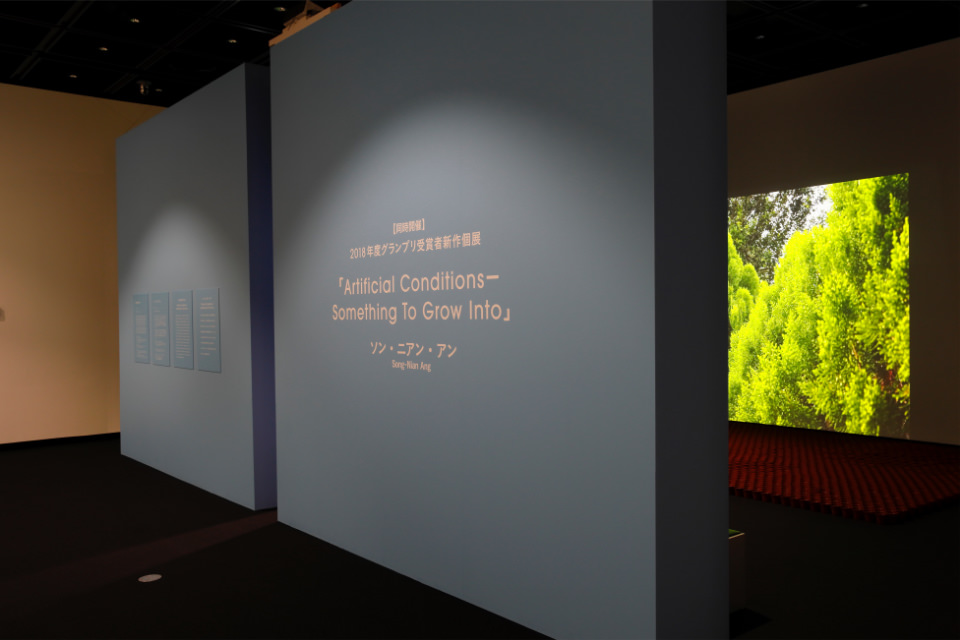
I enrolled in a diploma program to study visual communications when I was 17. The curriculum dealt with all parts of graphic design and photography, so that was how I entered the world of photography. The camera captivated me because of its particular ability to grasp all sorts of details and to handle nearly every type of creative expression. As camera and photography technology progress together, we are at a stage today where photographs are finally beginning to be accepted as tools for self-expression. I believe photography and the camera have been placed in an incredibly important position. People are continually trying to push camera technology further — for example, being able to capture larger images than ever — and improve the image quality itself. And while all kinds of possibilities exist, we can always return to the fundamentals when it comes to constructing and expressing images. If you have a good-performance camera, you can capture objects even in places with very little light, and by using a fast shutter speed, you can freeze very fast-moving objects. Conversely, using a slow shutter speed lets you take dreamy images with the same camera. These sorts of things are, to me, points in favor of the camera and photography.

And when you think about science, it's obvious how important the camera is. In looking at science in detail, you can inquire into such things as what kinds of cameras can be developed, and you can use cameras in the investigations too. Because everyone has a mobile phone, everyone is familiar with what a camera is capable of and the effectiveness of the camera's application. We are in an age when many people already think of themselves as photographers — though this can't be said with absolute confidence if we think about how cameras of the future will evolve. But I want to appeal to these people to do even more. In doing more, I think it will lead to greater visual literacy and, with the huge numbers of people possessing and owning their own cameras, visual literacy will encourage them to think about how to use their camera.
And as this happens, we must watch how the key players in the world of photography will address visual literacy. The visual world surrounds us at all times. Photographs exist wherever you go. Photography is the form of modern communications, in my opinion.
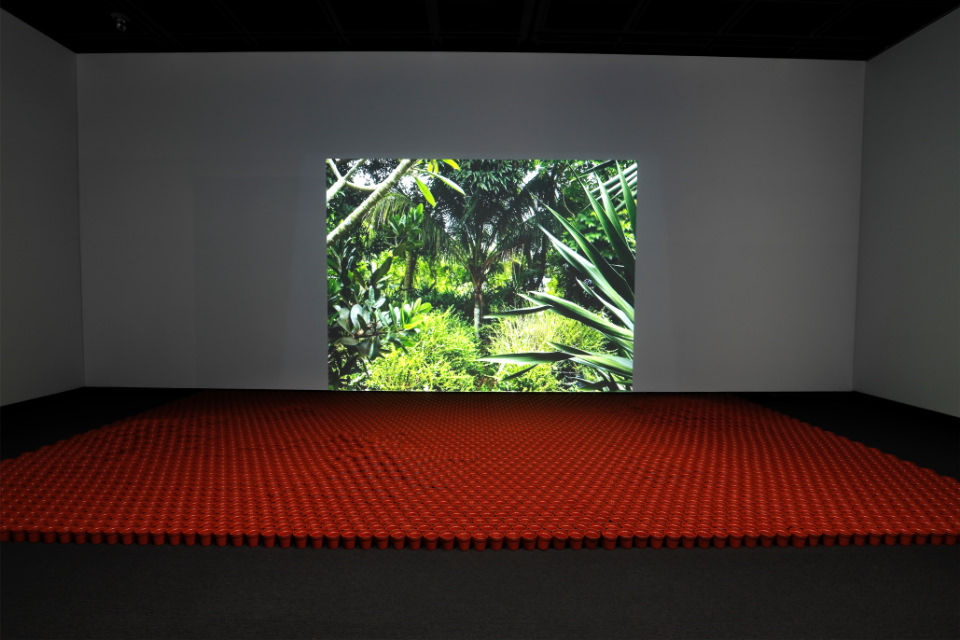
I produced my new work by joining together two works, like a combination of my efforts of the last several years. The concept of the work is growth over the passage of time. The photos I took of young seedlings and potted plants or in botanical gardens are themselves a landscape that gives us the feeling of nature. I carved out a part of this landscape as scenes and turned the scenes into the sort of images that viewers will look at. The images provide hints of various sorts to the audience, which is on the side looking at photos, although the amount of hints contained varies between the photos. The photos suggest things like: Are these really potted plants? Is some life-form, like a kind of plant, controlled beneath the ground emerging on the surface? I have presented still works making use of nature and plants in the past. This time, I wanted to express these things in a video using a concept that introduces “time” we engage with through experience.
What was important from the approach standpoint was having the audience see the video with the feeling of looking at something. I wanted to express the sensation of a plant revealing its slow, supple movements while preserving the sensation of looking at photographs. It's not possible for us to observe the exact process of a plant's development when we raise a plant. I realize there is the idea of actually growing a plant and making a documentary of it. But for me, I wanted to emphasize the element of a plant growing just as it is in a more literal fashion. I created short, two-minute scenes with the idea of wanting the viewing side to be a little more attentive than usual. Another intention was to use the form of plants that we are more familiar with, and not just plants in the natural world, so that people will train their eyes on potted plants, for example if there was one here. Arranging potted plants and planting vegetation in a certain place is exactly what landscaping is.
Today, unfortunately, nature and things that are cut down in some shape take the form of a commodity or a product. Then they are mass produced. And then sometimes people decide to reinsert them in landscapes. It's as if we want to access again the feeling of being within nature. The process of moving from nature to the man-made and then reconstituting nature again from the man-made caught my eye, as it's a very interesting concept to me. My fundamental keyword is control.
The concept of control is at the same time a declaration of our control over plants. Control was also unquestionably an element in my last work “Hanging Heavy On My Eyes”. This idea of control also extends to the way we control the entire world of plants. My current work is the result of burning forests, peatlands, and other natural features. We manipulate nature to a tremendous extent — which amounts to imposing extremely rigorous controls — to fulfill our agendas.
We prepared 10,000 pots. This came about by collecting whatever products were sold at botanical gardens and elsewhere. No matter how young the seedling, we were always given an individual pot for each one. Therefore, even when we want to create and grow a plant for example, there is a structure that manufactures the pots from compound plastics and other materials and delivers each one right to you. Pots are, in a way, a means of sustaining desire — like how we wish to grow these potted plants.
What relationship do these pots have in the control of plants?
There is a movement to remove the man-made from nature and recreate nature. That gave me the idea of attempting to make a landscape using potted plants. As you can see, representing this idea required a lot of energy in how to organize and arrange the pots. But from this representation, when you look at a plantation, you will notice trees do not grow up straight whereas the pots are artificially arranged and lined up. These arrangements are important motifs and very large elements of the work as a whole.
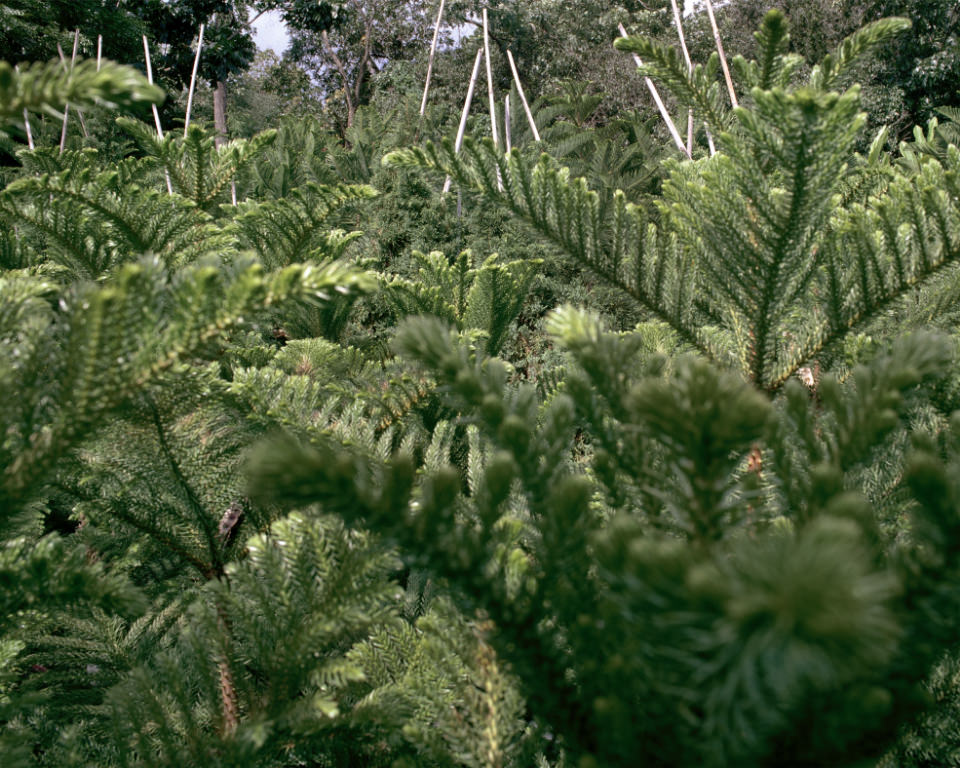
I wish to create new works that entice viewers to consider the problems I am presenting and that, conversely, create a desire to pose questions about these problems. I want the audience to ask themselves: What do I think? How do I look at the world? Moreover, I want viewers to draw out their own questions from within themselves. It's not my intention, however, to impose on the audience any particular way to view my works. I believe this is the most important thing about the role of art. I'm still at the starting point. I plan to take and collect photos of what is really going on, not just in Asia but hopefully all over the world.
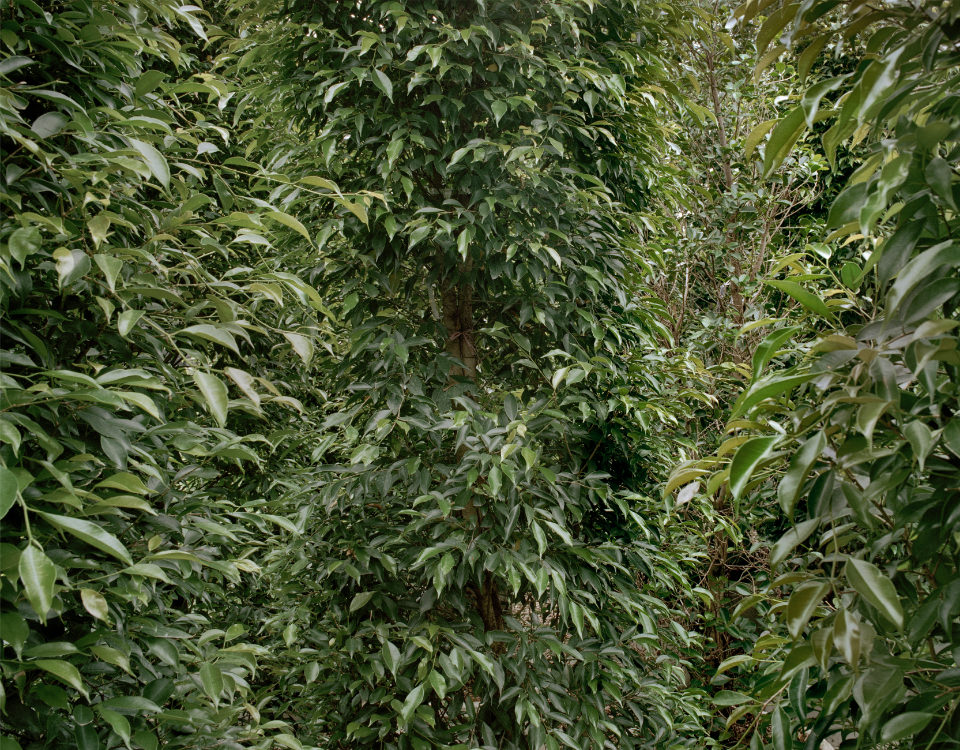
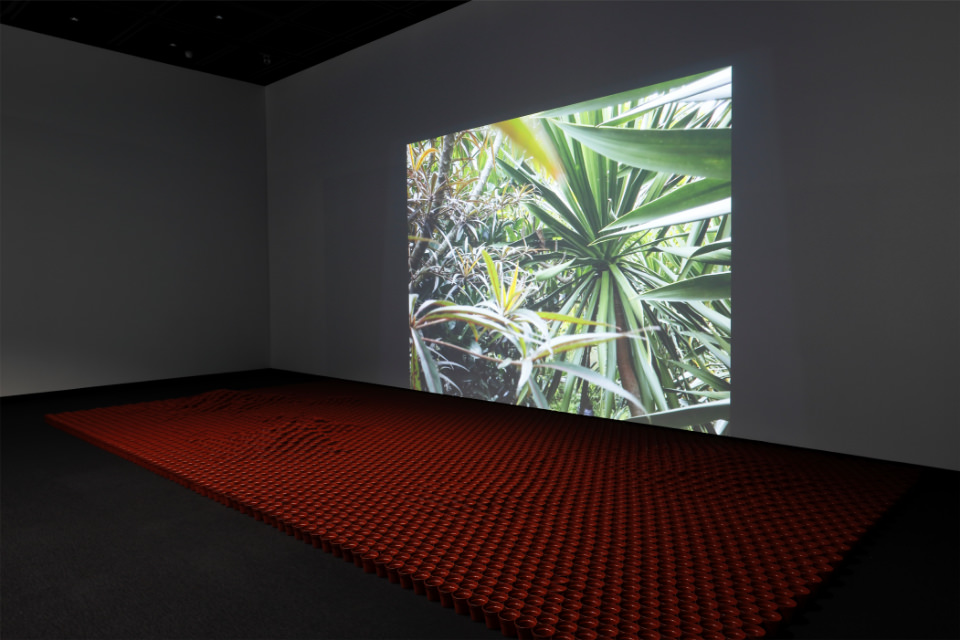
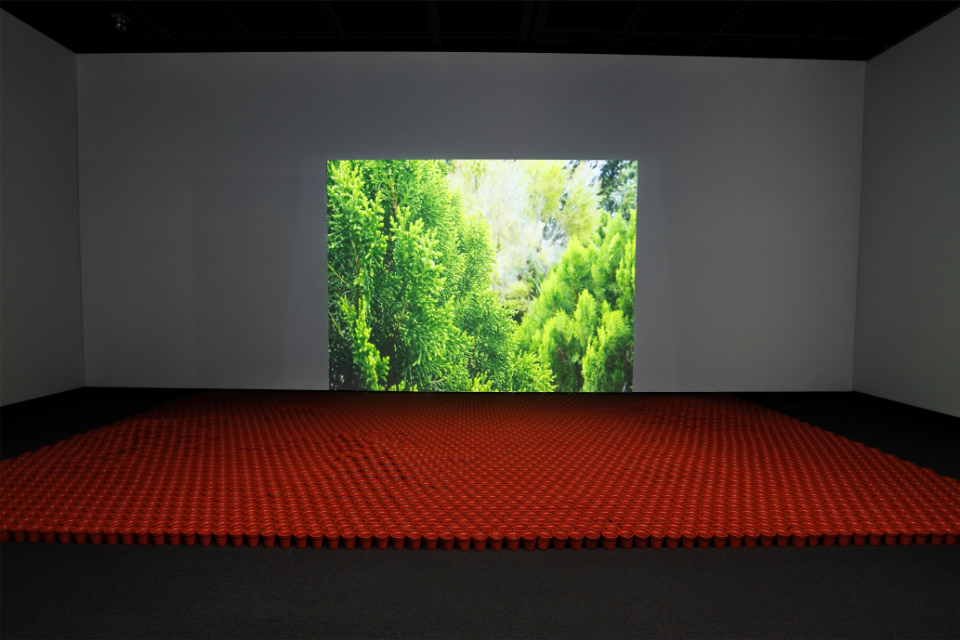
My hope is to expand on both “Hanging Heavy On My Eyes” and this year's work and develop these into much larger projects. The problem of air pollution, in particular, is not confined to any one country and is not the property of someone. The reality of air pollution is the same for everyone and shared among everyone.
A similar issue is how we continue to consume nature and potted plants. These two issues show a strong correlation. And they have very powerful connections to consumerism and financial areas.
While the elements of the two works may appear different on the surface, a common thread connects the two. The common thread is about what is really happening in the world. I want to collect even more data, which may lead to me coming up with something to say in yet another format. I should look at data over five or 10 years, maybe not limited to just one country, or maybe I'll only look at Singapore. As with the potted plant series I'm involved with now, I want to focus on how these issues will reveal movement from now on.
Take a seedling for example. It does not necessarily spend its entire life in its native country. It could possibly be grown in some other country and then relocated again to another climate. I see this also as a type of control.
I'm sure that each contestant has his or her own original concept or story he or she wishes to tell.
What's important, in my view, is for you to truly believe in your concept or story. I absolutely wanted to enter a competition. And if I didn't win this time, I would try again next time. And I would believe that I would win next time. The judges change, but it's vital that you yourself truly believe and have confidence in your work and in its significance.
As for approaches to creating works, one way is to consider how you can continue to use the photographic techniques you already know and understand. Another is thinking about how people talk about some issue or problem. I'd also like contestants to search for new creative expressions based on existing techniques and to start thinking about how to achieve these new creative expressions.
He was born in Singapore in 1983.
He received the bachelor's and master's degrees in photography from the UAL Camberwell College of Arts and the London College of Communication respectively.
In 2012, he was awarded the International Graduate Scholarship for his graduate studies at the London College of Communication,
University of the Arts London. Currently lectures at the School of Art, Design and Media at the Nanyang Technological University in Singapore.
He works with materials and traces of human behaviors made visible within landscapes through photographic documentations and installation.
Intrigued by the narration of thoughts and ideologies through visuals, he favours a microscopic approach to concepts, a style he employs to open up details in his practice.
| 2015 | “A Tree With Too Many Branches” |
| 2016 | “As They Grow Older And Wiser” at the Bangkok University Gallery |
| 2017 | “Hanging Heavy On My Eyes” at DECK, and the Sunderland University Priestman Gallery |
| “Unearthed” at the Singapore Art Museum |
| “Engaging Perspectives” at the Centre for Contemporary Art (Singapore) |
| 2010 | The International Graduate Scholarship for his graduate studies at the London College of Communication, University of the Arts London |
| 2010 | eCrea Award (Spain) |
| 2012 | “The Winner for Photography in the Noise Singapore |
| 2018 | “The 2018 (41st) New Cosmos of Photography Grand Prize |